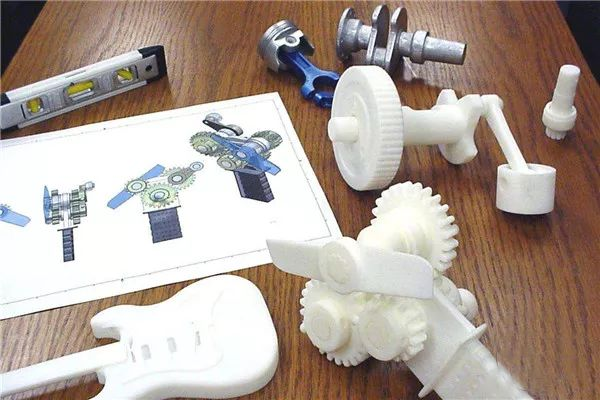

Although several days have passed since the death of Shinzo Abe, the accompanying heat has not disappeared. People are paying attention to a lot of things. The incident happened suddenly. Some media reported that the guns used on the mountain were 3D printed. Has it gotten to the point where everything is printable?
Regardless of the truth, let's take a look at the feasibility of 3D printing guns.
As early as the 1980s, some people proposed to use 3D printing technology to make guns. 10 years ago, the world's first gun made with 3D printing technology appeared, making this idea a reality, and then 3D printing gun technology gradually matured.
In fact, Japan already has a precedent for 3D printing guns. As early as 2014, a Japanese man named Kachi Iimura made gun parts with his own computer and 3D printer, and successfully assembled them into two pistols. Publicity on the Internet, was later caught by the police and sentenced.

So there are many people who agree that the guns used on the mountain are 3D printed.
But there are also disagreements.
Some netizens believe that 3D printed guns cannot control the chamber pressure at all. The bullet is in the barrel, and it needs to rely on the huge pressure generated by the explosion of gunpowder as a push to launch at high speed. Therefore, the material of the barrel must be excellent, otherwise it cannot guarantee safety and security. Durability, and 3D printed guns, the barrel material is basically ABS plastic, a shot, the gun will shatter, and may even hurt itself.
There are also 3D printed guns made of metal, but the cost is high, and ordinary people simply cannot afford such costs.
3D printing requires some programming or modeling expertise, as well as high-precision printing, so the possibility of 3D printing firearms is minimal.
3D printing technology
In recent years, 3D printing technology has developed rapidly and is widely used in many industries.
3D printing is a technology that builds objects by layer-by-layer printing based on digital model files, using digital technology printers, using adhesive materials such as powdered metals or plastics. The accumulated materials are plastics, ceramics, metals, etc.
At present, 3D printing technology is mainly used in education, medical, automotive, aerospace, industry and other fields.
Others include jewelry, shoes, bags, figurines... There are all kinds of printable items, and there are everything, only you can't think of it, you can't do it without it.
3D printing does not require machining and molds, and directly generates parts from computer graphics data. Compared with traditional production methods, it can shorten the production cycle, simplify the production process, improve productivity, and reduce production costs.
Types of 3D printing technologies
1.SLA - Stereo Light Curing Technology
SLA is the earliest practical rapid prototyping technology, and the raw material is liquid photosensitive resin. A laser with a specific wavelength and intensity is focused on the surface of the light-curing material, so that it solidifies sequentially from point to line, from line to surface, and then solidifies another layer after completing one layer, layer by layer.
High maturity, complex molds can be processed, high degree of automation; high cost, harsh environmental requirements, and resin curing variability.
2. SLS—Selective Laser Sintering
The solid powder is selectively layered and sintered by a laser, and the sintered solidified layers are superimposed to form parts of the desired shape.
The used molding materials are extensive, the molding parts are widely used, and the system is simple; the surface of the molding parts is rough and needs post-processing.
3. LOM—Layered Entity Manufacturing Method (Laminated Molding Method)
The sheet is used as the raw material for laser cutting, and after cutting one layer, it is glued, then cut again, cut and glued layer by layer, and finally becomes a three-dimensional workpiece. Common materials for LOM are paper, metal foil, plastic film, ceramic film, etc.
The model has good effect, low cost and high efficiency; processing is time-consuming.
4. FDM—deposition forming method
Using filamentary materials (paraffin, metal, plastic, low-melting alloy wire) as raw materials, the wire is melted and coated on the workbench by electric heating to form a layer of cross-section of the workpiece, layer by layer. Suitable for small and medium workpieces.
Low pollution, easy maintenance, low cost; lower precision than SLA, rough surface of workpiece and long processing time.
5.3DP—3D printing
3D printers with 3DP technology use standard inkjet printing technology and can also print in color.
In 2005, China's first 3D-printed titanium alloy small parts were installed on an aircraft, thus completing a landmark step in metal 3D printing technology.
Today, with the help of 3D printing technology, China has reached the world's advanced level in the field of large and complex key metal components manufacturing for major equipment such as aircraft and rockets.
China's 3D printing patents ranked first in the world.
3D printing is subtly changing people's concept of manufacturing, and 3D printing is still a major technological trend.
We're more than just an IoT solutions provider—CDEBYTE is your partner in making sustainable and efficient technology towards a more connected future. It's IoT make everyting easy.







